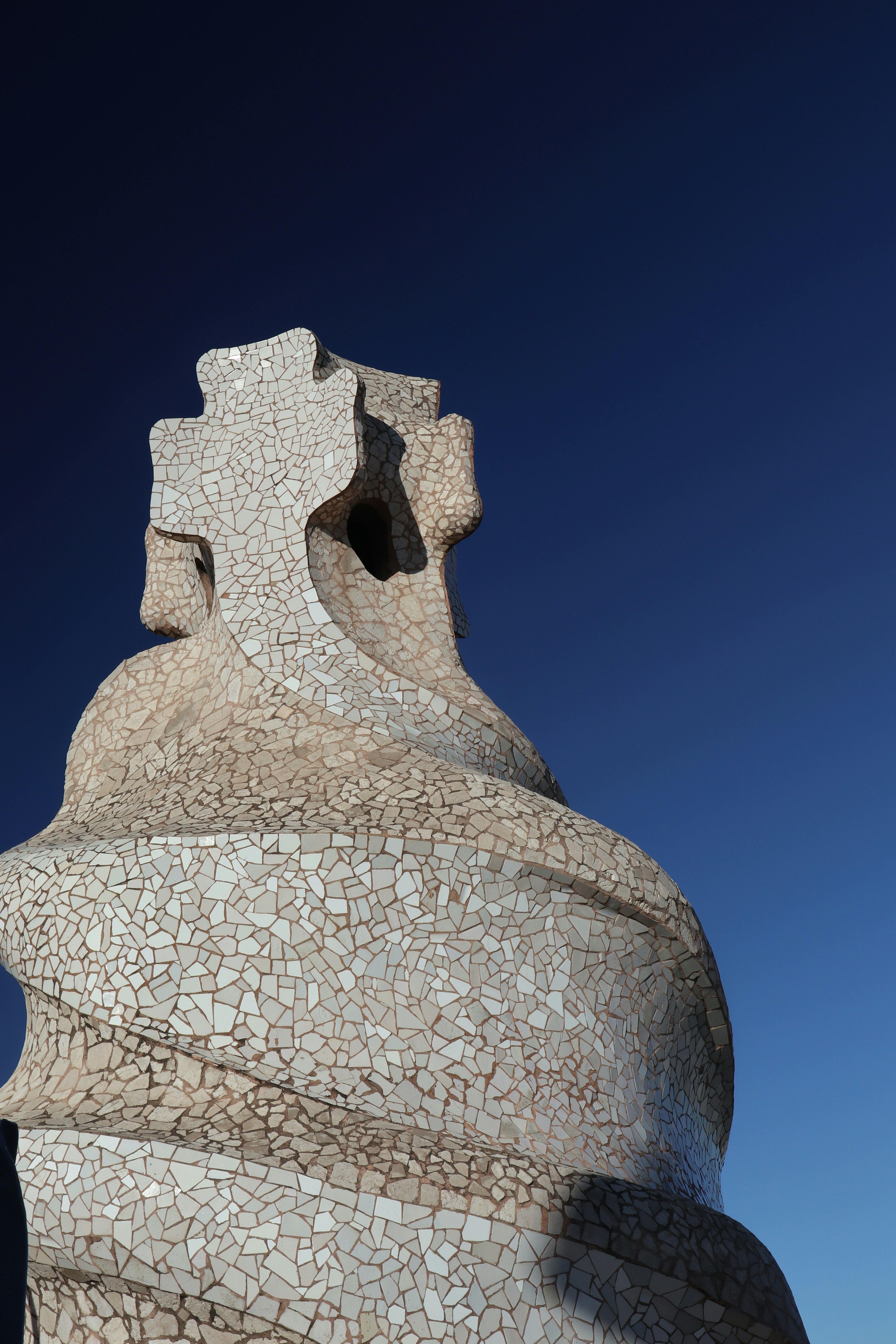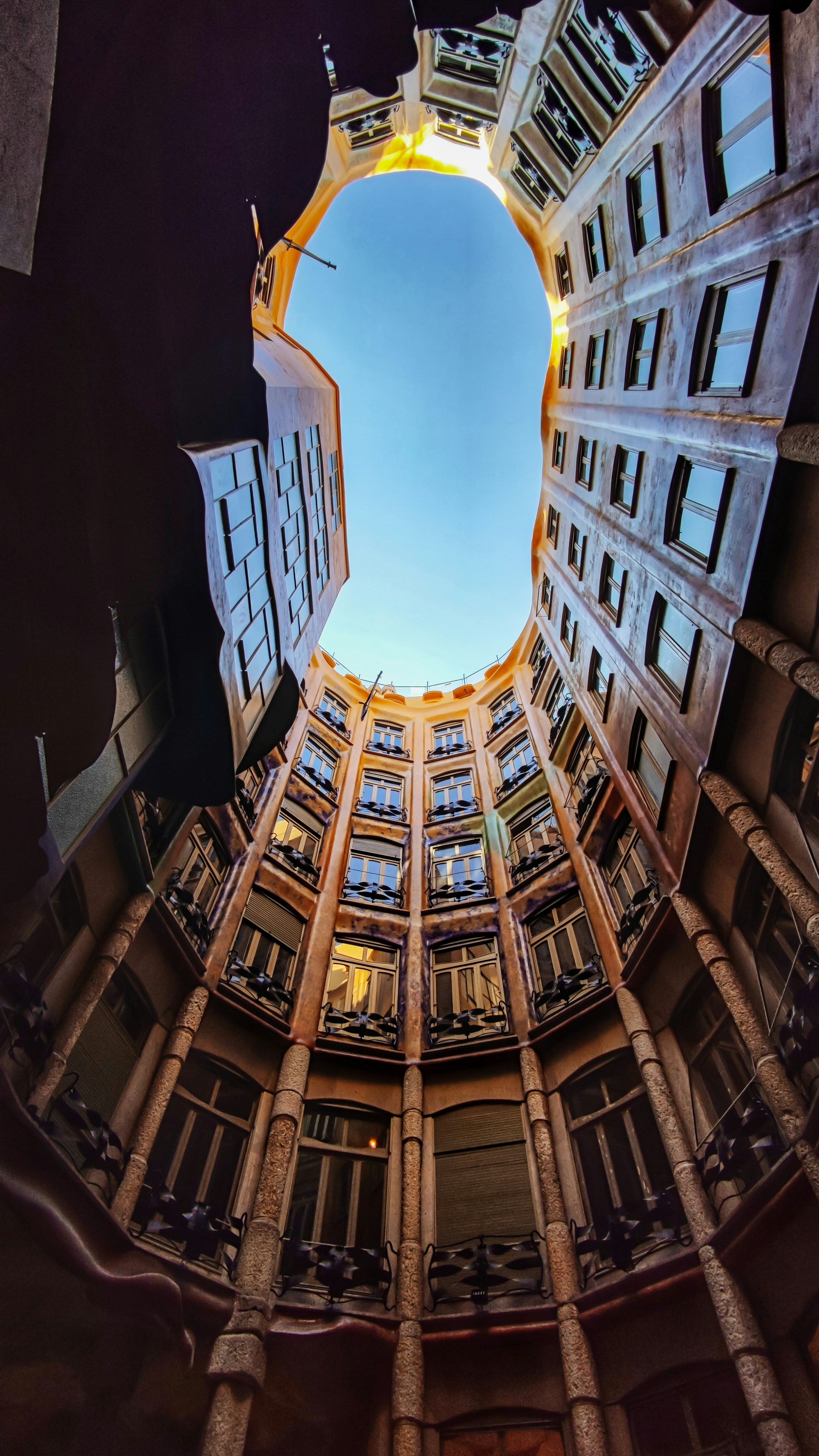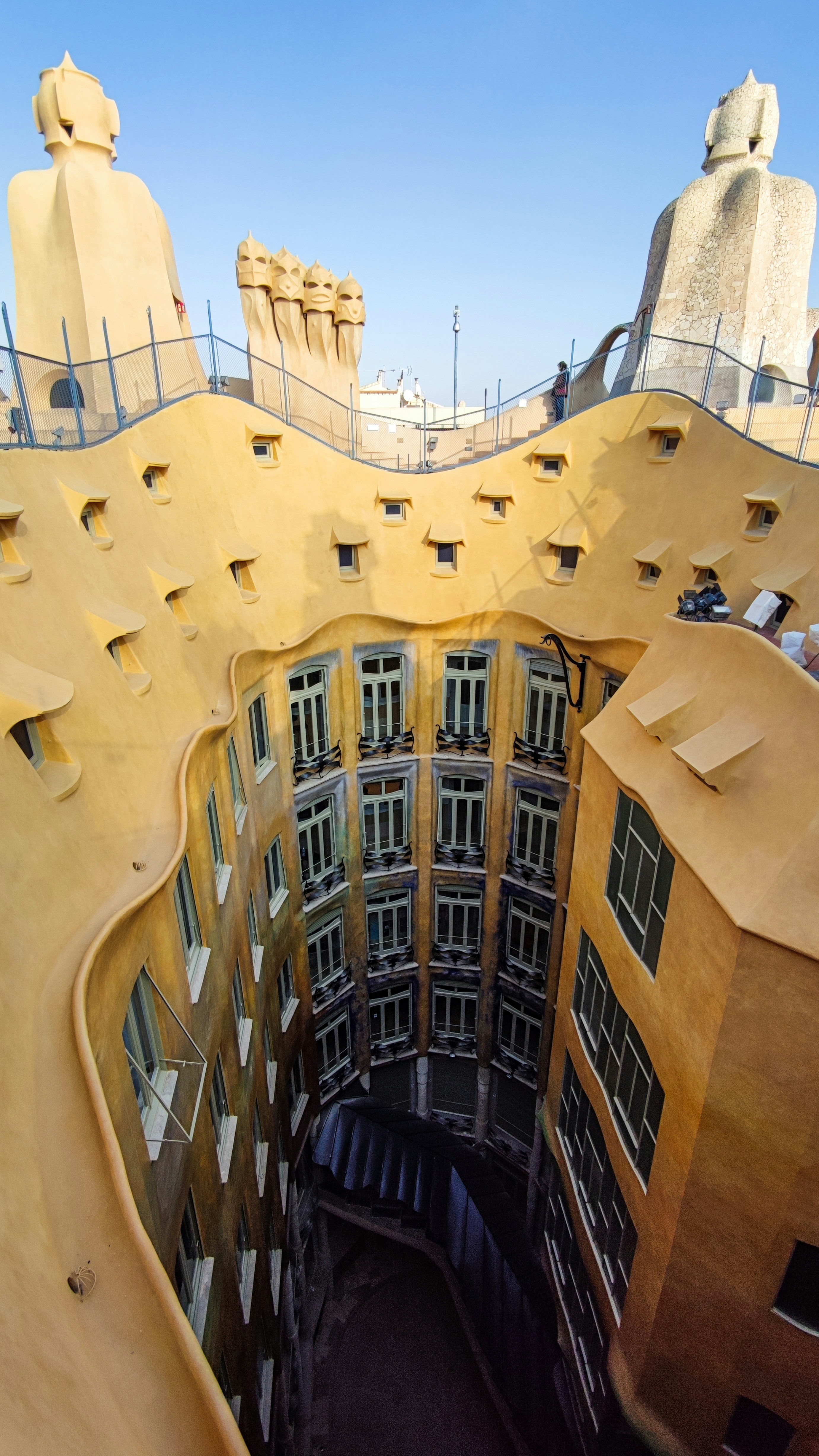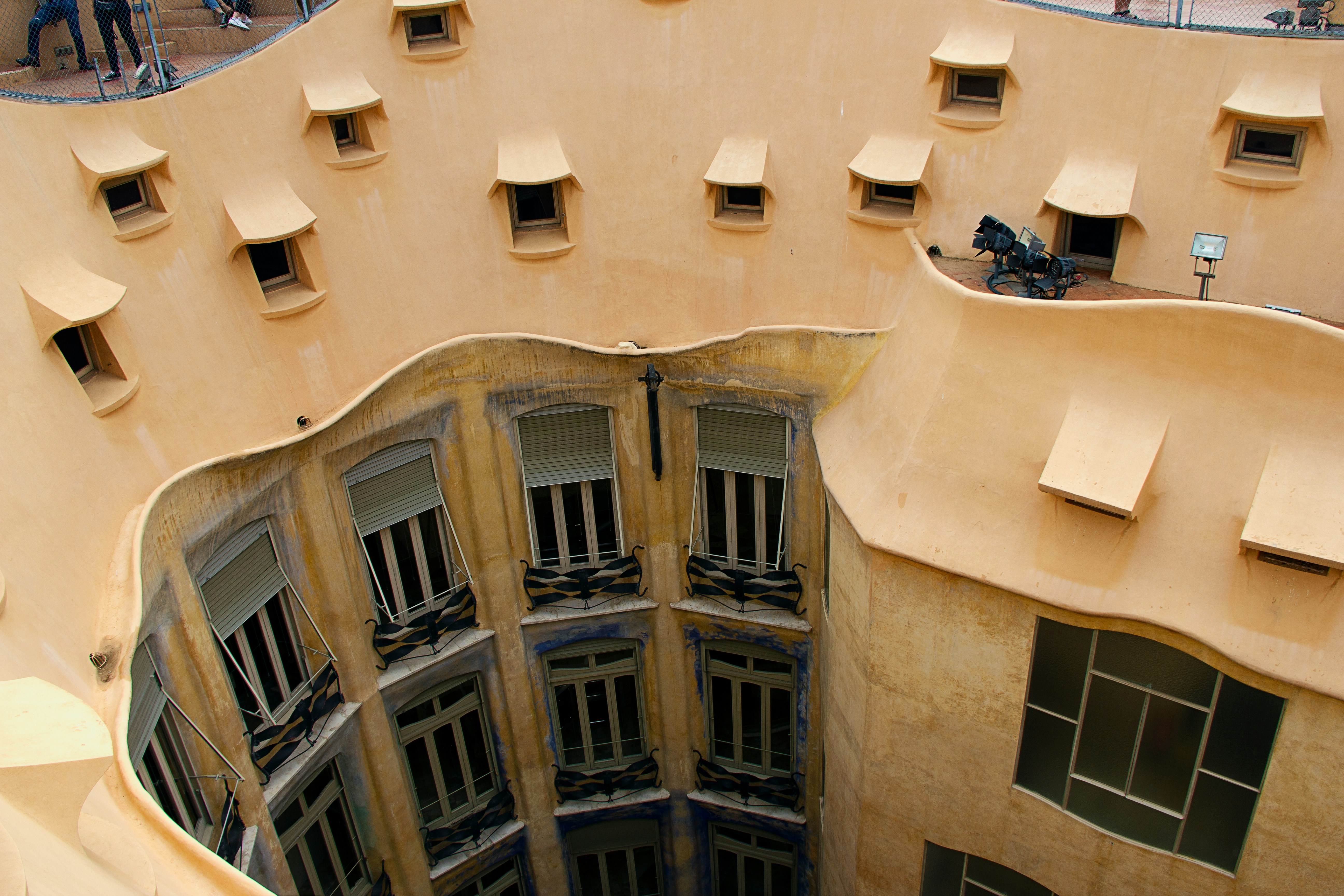check:
info:
Completion Date: 1912; known for its flowing design.
Architectural Style: Key example of Catalan Modernism.
Features: Sculptural rooftop with warrior-like chimneys.
UNESCO Status: UNESCO World Heritage Site.
ARCHITECTURE, INTERIOR DESIGN
Casa Milà: Gaudí's Iconic La Pedrera
12 Oct 2024
Casa Milà, also known as La Pedrera ("the quarry"), is one of Antoni Gaudí’s most iconic buildings, completed in 1912. Its flowing, organic façade and sculptural rooftop give it a natural, almost surreal look, as if it were shaped from the earth itself. A standout of the Modernista movement, the building has nine levels, including a basement, ground floor, mezzanine, main floor, four upper floors, and an attic. The main residence was on the first floor, while the upper floors were rented out.
Casa Milà's design features two interior courtyards that form a figure-eight shape, while the rooftop is both functional and artistic, with chimneys, skylights, and stairways all designed as sculptural elements. Gaudí separated the building's structure from its stone façade, using steel beams to support the wavy exterior, allowing for the continuous curves that define the building.
The attic is supported by 270 parabolic arches, adding to the organic feel of the design. The façade is divided into three parts: the ground-level stone section, the middle floors with their curved lines, and the rooftop crowned with surreal, human-like sculptures. Despite initial controversy, Casa Milà became a symbol of the Modernista movement and has had a lasting influence on biomimicry in architecture, showcasing Gaudí’s mastery of form and innovation.
Tags:
Casa Milà,La Pedrera,Antoni Gaudí,Modernista architecture,Barcelona,gaudi








